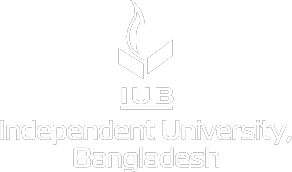HST 103: History and World Civilisation
3 credits | Prerequisites: None
Course rationale
This course begins with pre-historic times and the earliest human settlements and tribal organizations. The discussion will be done on the major civilizations around the world. This course introduces world history from the dawn of civilization to the early modern era. Topics include Eurasian, African, American, and Greco-Roman civilizations and Christian, Islamic and Byzantine cultures. Consideration of the ancient period will also include the development of the cradles of civilization, the growth and decline of classical cultures, interactions among classical and nomadic peoples, and the establishment of great world religions. The study of the medieval period will include varieties of rebuilding after the collapse of classical empires, the roles played by great world religions in medieval cultures, and the development of technologies of communication and transportation. Topics considered in the early modern period include the geographical exploration and early colonization efforts by Europe, and the impact of the emerging new world order.
Course content
Introduction to the Course, Pre-historic Age, Primitive man, and growth of culture, The culture of paleolithic people, The Mesolithic culture, The ‘Neolithic, The Urban Revolution, Theories of civilization The ‘Fertile Crescent, The Sumerian origins of Mesopotamian civilization and their developments, The Old Babylonian developments, The metamorphosis under Assyrians, The rise of the Lydians and the Medes The Chaldean Renaissance, the importance of the Nile, The Old Kingdom and the Middle Kingdom, Divine kingship and the New Kingdom, Egyptian life and their achievements, The Shang dynasty – their creativity and culture, The Chou period – the ‘Classical Age’, The state of Ch’in and its reforms, The rise of philosophical schools – Confucianism, Taoism, and Mencius doctrine, The Han Era, The spread of Buddhism and its impact, The T’ang dynasty and their contributions, The Sung Dynasty , China under the Mongols – administration, culture and Pax-tataricage, Aegean civilization, a forerunner of the Greek: The Minoan and the Mycenaean, The Hellenic era: The Homeric age, the City-States, and the age of oligarchy Athens, the Dalian League, Sparta, the Peloponnesian League, and the Peloponnesian war, The Macedonian Era, Alexander the great, The Hellenistic civilization, Early Italy and the Roman monarchy, The Early Republic. The Punic wars, The social struggle of the Late Republic, Pax Romana, Roman Law, The land and people of Ancient America, Mexico – its political institutions and the Classical Mayan Government The Toltecs and the Aztecs, Division and Decline of the Roman Empire, The Barbarian invasions and the fall of the Roman Empire in the west, Impact of the Barbarian invasions on the European civilization, Byzantine administration, Feudalism, Harappa, Majenjidaro and Bengal Delta, Rise of Islam, Four Caliphs, Abbasids & Umayyad, Muslim Spain, The Ottomans, The Renaissance, and middle Ages, 15th century’s Renaissance in Europe, Spanish, Portuguese and the British colonial empire, Europe invades the East: Dutch and Portuguese empire in the East, The French and the British in India, Political, Decline of the Medieval Church, The Lutheran upheaval, The spread of Protestantism, the Religious division of Europe in 1550, The English Reformation, The intellectual origins of the Scientific Revolution, The Copernican Revolution, the Thinking of Galileo and Isaac Newton, The Enlightenment, The French Revolution, The Industrial Revolution, Colonialism, Mercantilism.
Course objectives
- Introduce students with rich Global history.
- Students will be able to demonstrate knowledge of the Global dynamics.
- Develop student’s understanding on major civilizations of the World.
- Analyze significant political, socioeconomic, and cultural developments in the earliest western
- Civilizations, during the rise of Christianity and Islam and during the early modern era.
- Students can find and evaluate sources of information about World history.
References
- Marvin Perry & others, Western Civilization, Wadsworth Publishing, 2003.
- John Boardman & others, The Cambridge Ancient History, Cambridge University Press, 1982.
- Buckley Ebrey Patricia, The Cambridge illustrated History of China, Cambridge University Press, New
York, 1996, 2010. - Vere Gordon Childe, The Bronze Age, Franklink Classic Trade Press. 2018.Ali, Sheikh Maqsood (2017).
From East Bengal to Bangladesh. Dhaka: UPL. - J. E. Swain, A History of World Civilization, Mcgraw-Hill, New York, 1938.

